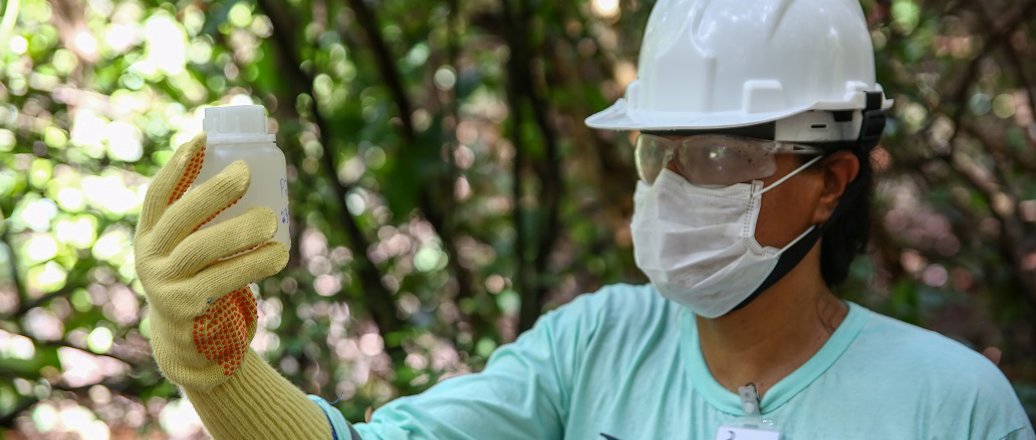Just over two years after the last field research, the Brazil-Norway Biodiversity Research Consortium (BRC) team returned to field work in 2022. Following all health and safety protocols against Covid-19, a team of five researchers spent a week at Hydro Paragominas on a reconnaissance visit.
The researchers from the Federal University of Pará (UFPA) and Federal Rural University of the Amazon (UFRA) worked at six points in the Parariquara and Cachoeirinha streams, which are part of the Potiritá River sub-basin of the Capim River basin.
The objective was to analyze aquatic ecosystems and the interaction between fish and bivalve molluscs.
“We have listed some bioindicators of environmental quality, such as reproductive and feeding aspects of fish or the musculature of animals to assess whether there is any interference from the environment in this ecosystem,” explains Professor Bruno Prudente, one of the team members.
The researchers are celebrating being able to get back in the field. They want to return every two months to continue with the research after defining a previous list of species that may be potential bioindicators and the methods that will be used.
“This first visit was in fact a resumption to analyze logistics, access and necessary equipment, in addition to assessing whether there are other species in this period, considering that the previous visits were during the dry season,” Prudente explains.
For Professor Rossineide Rocha, coordinator of the team, the return to field activities is a great joy: “We have a commitment to the university and the activities of the BRC. So giving that first kick was essential. Our project is new, so we didn't have any activity at the mine at any time, we were eager to start this work in the field.”
Research in isolation
Although the researchers could not go to the field during the two years in quarantine, the BRC continued with its activities.
“The team did not stand still. We used these two years to work on other fronts, such as strengthening communication between the parties in the consortium, holding events and seminars on virtual platforms and working on methodologies, among other topics,” says Rafael Assis, coordinator of BRC.
In 2020 and 2021, there was a considerable number of publications in scientific journals, with more than 30 articles published or accepted for publication. There was also the development of the Strategic Plan of the consortium and a significant increase in the number of students supported by the BRC, both for undergraduate and graduate students, highlighting the importance of the consortium for the institutions involved and for the science developed in the region.
Preparations for resuming field work had already started at the end of 2021.
“At the university we are already in a hybrid system, alternating between face-to-face and online, and we were already attending the laboratories. Although we did a lot here, this stage of the field research was necessary for the students to get to know the material,” says Zelia Maria Pimentel, professor at UFPA's Bragança campus.
During the period when the team could not go to the field, the researchers made the most of the data from the region that were already available, samples that had already been collected and even planned and tested hypotheses identified in the studies that could be applied in the region.
The Biodiversity Research Consortium (BRC) is a partnership initiated by Hydro to invest in research to strengthen conservation strategies for Amazonian fauna and flora, in addition to generating information that supports the improvement of forest recovery processes in bauxite mined areas in Paragominas. The Paragominas mine serves as a large natural laboratory for technical and scientific analyzes developed by the Consortium, which is comprised of the Federal University of Pará (UFPA), the Rural University of Amazon (UFRA), the Emílio Goeldi Museum of Para (MPEG), of the University of Oslo (UiO, Norway) and professionals from Hydro.
Published: March 25, 2022
